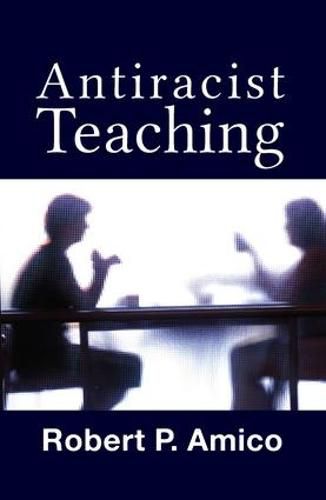Readings Newsletter
Become a Readings Member to make your shopping experience even easier.
Sign in or sign up for free!
You’re not far away from qualifying for FREE standard shipping within Australia
You’ve qualified for FREE standard shipping within Australia
The cart is loading…






Antiracist Teaching is about awakening students to their own humanity. In order to teach about this awakening one must be in the process of awakening oneself. The author shares personal anecdotes to illustrate the kinds of changes he experienced as a result of his antiracist teaching. His book explores the questions, Why is teaching about racism and white privilege to white students so difficult? and What can educators do to become more effective antiracist teachers for all of their students? Amico examines the cognitive and emotive obstacles that students experience in the classroom and argues that understanding these difficulties can lead to their resolution. He considers a variety of different approaches to antiracist teaching and endorses a dialogic approach. Dialogue is the centerpiece of students classroom experiences; students engage in dialogue at nearly every class meeting. The dialogic approach is effective in a variety of different learning settings from K 12 classrooms, trainings, retreats, workshops, and community organizations to the college classroom. Further, the book discusses how to bring antiracist teaching into the core of university curricula.
$9.00 standard shipping within Australia
FREE standard shipping within Australia for orders over $100.00
Express & International shipping calculated at checkout
Antiracist Teaching is about awakening students to their own humanity. In order to teach about this awakening one must be in the process of awakening oneself. The author shares personal anecdotes to illustrate the kinds of changes he experienced as a result of his antiracist teaching. His book explores the questions, Why is teaching about racism and white privilege to white students so difficult? and What can educators do to become more effective antiracist teachers for all of their students? Amico examines the cognitive and emotive obstacles that students experience in the classroom and argues that understanding these difficulties can lead to their resolution. He considers a variety of different approaches to antiracist teaching and endorses a dialogic approach. Dialogue is the centerpiece of students classroom experiences; students engage in dialogue at nearly every class meeting. The dialogic approach is effective in a variety of different learning settings from K 12 classrooms, trainings, retreats, workshops, and community organizations to the college classroom. Further, the book discusses how to bring antiracist teaching into the core of university curricula.